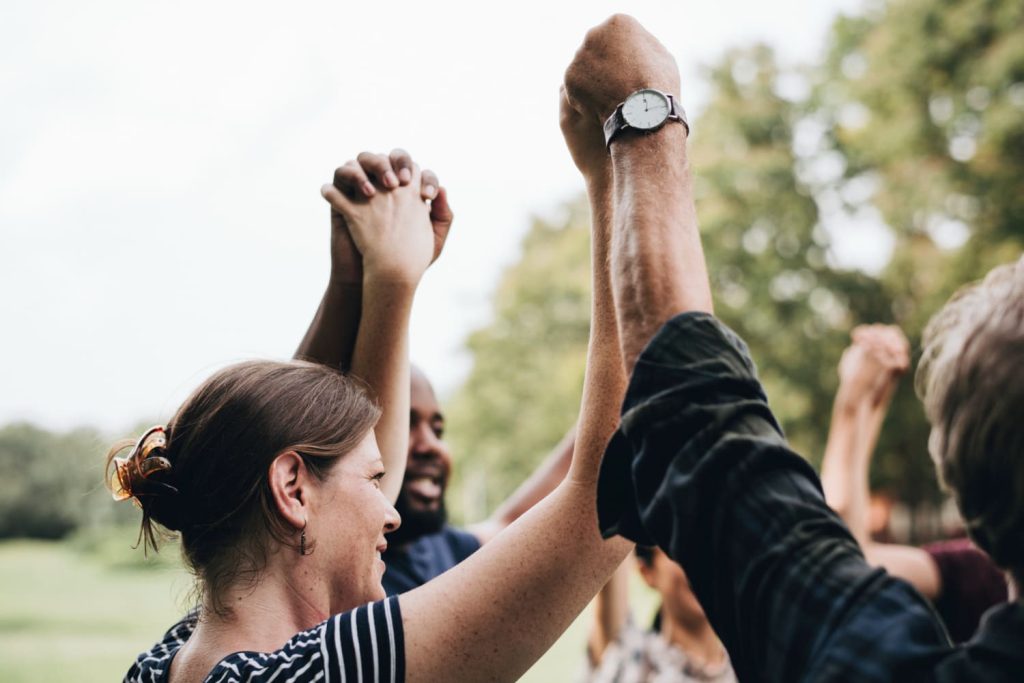In an increasingly interconnected world, the importance of fostering strong and inclusive housing communities cannot be overstated. A sense of belonging, mutual respect, and collaboration among residents not only enhances the quality of life but also contributes to the overall well-being of individuals. Whether you’re a homeowner or a property manager, several effective strategies can help build and sustain vibrant, diverse, and inclusive housing communities.



Here are our top strategies for building a strong community in affordable housing and keeping inclusivity in mind:
- Promote Open Communication
To promote connection and inclusion, property owners or managers should prioritize open communication. Clear and open communication lays the foundation for a thriving community. You should focus on making platforms for the residents to communicate with each other. Encourage active listening and create an inclusive environment where everyone’s voice is heard, and effective solutions are provided if they are facing any issues. Make them feel part of the community.
- Cultivate a Sense of Belonging
Humans have an inherent need to belong. Create opportunities for residents to connect on a personal level. And for this, you can organize social events, workshops, and communal activities that cater to various interests and age groups. When people celebrate different traditions, holidays, and festivals, it brings them together and makes them feel like they belong. This encourages them to interact with their neighbors and work together to improve their surroundings.
- Encourage Collaborative Decision-making
One of the simplest ways to make people feel included and valued is to involve them in the decision-making process. By doing this, residents will feel a sense of community and inclusivity. When residents have a say in shaping their environment, they feel a greater sense of ownership and investment. And for this, you can make some groups or communities which should include at least a person from each family living in affordable housing to address certain concerns, safety measures, or sustainability initiatives. Collaborative decision-making is important because it improves outcomes and empowers residents to shape their community.
- Avoid Discrimination
As a property owner or property manager, you should strictly avoid any kind of discrimination. You should focus on embracing and celebrating differences in ethnicity, culture, religion, age, and socioeconomic status. You should create spaces that are accessible and accommodating for everyone, regardless of their background and abilities. Treat everyone equally and with respect to comply with Fair Housing Laws. Avoid favoritism and biased behavior. When individuals from various backgrounds come together, they contribute a wealth of perspectives and ideas that enrich the community as a whole.
Related Article: Understanding Fair Housing Protections for the LGBTQ+ Community
- Promote Sustainable Practices
Sustainability helps the environment and brings communities together. You should encourage eco-friendly practices, such as recycling, energy conservation, and community gardens. Working together for sustainability can bring neighbors closer, creating a sense of unity and shared responsibility. By taking care of the environment, residents can also contribute to the long-term well-being of their community.
Sustainability in everyday life | Sustainability
- Provide Opportunities for Skill Sharing
Everyone has something valuable to contribute. You can create platforms where residents can share their skills and knowledge with one another. This could include workshops, classes, or mentorship programs. By tapping into the diverse talents within the community, residents can learn from each other, build new skills, and forge stronger connections.
- Address Conflict Constructively
Conflicts are inevitable in any community, but how they are handled can make all the difference. You should encourage residents to address conflicts openly and respectfully, seeking solutions that benefit everyone involved. You can provide mediation and conflict resolution training that can equip community members with the skills to navigate disagreements productively, which will eventually help in preventing issues from escalating and preserving the harmony of the community.
- Foster a Spirit of Volunteerism
Volunteerism is a powerful tool for building a sense of community and fostering inclusivity. You should support the residents to get involved in community service projects, whether it’s helping the elderly, supporting local schools, or participating in neighborhood clean-up initiatives. This will not only improve the community itself but also strengthen the bonds between residents who work together for a common cause.
- Celebrate Achievements and Contributions
Building strong and inclusive communities will take effort from everyone involved. You should recognize and celebrate the achievements and contributions of individual residents and the community as a whole. You can do this by acknowledging milestones, such as anniversaries, successful projects, or personal accomplishments. You should also appreciate people for contributing to volunteering projects for the betterment of society. By highlighting positive outcomes, you reinforce the sense of community pride and motivate residents to continue working together for the betterment of all.
- Lead by Example
Community leaders, whether they are property managers, homeowner association representatives, or long-time residents, play a crucial role in setting the tone for the community. You have to lead by example, demonstrating the values of inclusivity, respect, and collaboration in your actions and interactions. When others see your commitment, they are more likely to follow suit and contribute positively to the community.
Benefits of Building Affordable Housing Communities
Building Affordable Housing Communities in the United States offers a myriad of benefits, addressing critical issues and positively impacting both individuals and society as a whole.
- Economic Accessibility: Affordable housing communities make homeownership or renting more financially feasible for a broader segment of the population. This fosters economic inclusivity, enabling individuals and families to secure stable housing without an undue financial burden.
- Community Stability: Affordable housing contributes to the stability of communities by reducing transiency. When residents can afford to stay in one place for a more extended period, it fosters a sense of belonging and community cohesion.
- Health and Well-being: Stable housing is foundational for overall health. Affordable housing ensures that individuals and families have a secure and consistent place to live, positively impacting mental and physical well-being.
- Economic Growth: Investment in affordable housing stimulates economic growth by creating jobs in construction, maintenance, and related industries. Additionally, increased housing stability leads to more consumer spending, further contributing to the local economy.
- Reduced Homelessness: Affordable housing initiatives are instrumental in combating homelessness. By providing viable housing options for those with lower incomes, communities can address and alleviate the homelessness crisis.
- Diverse and Inclusive Communities: Affordable housing encourages diversity and inclusivity within neighborhoods, fostering a rich tapestry of backgrounds, experiences, and perspectives. This creates vibrant, resilient communities.
- Social Equity: Affordable housing is a cornerstone of social equity, ensuring that individuals across various income brackets have equal opportunities for safe, decent living conditions. This contributes to a more just and equitable society.
Investing in the creation of affordable housing communities in the United States is not just a matter of shelter; it’s a strategic move toward creating a healthier, more inclusive, and economically robust nation.
Final Words
In the tapestry of housing communities, the threads of unity, understanding, and collaboration are intricately woven. This weaving is not a swift or solitary endeavor;It’s a collective masterpiece that emerges through dedication, persistence, and a shared vision. As these strategies take root, they breathe life into an environment where every voice finds resonance, where diversity is celebrated, and where the sum of individual strengths creates a harmonious symphony.
So, let us continue to nurture this vision, foster open dialogue, and uphold the values that underpin the foundation of our housing communities. With each conversation, every act of kindness, and all strides towards inclusivity, we pave the path toward a brighter, more harmonious future.
As we build stronger communities, we’re not just constructing houses; we’re building bridges of understanding that span cultures, generations, and backgrounds. Together, we illuminate the possibilities of unity, and through our efforts, we illuminate the way forward for a more connected and compassionate world.




